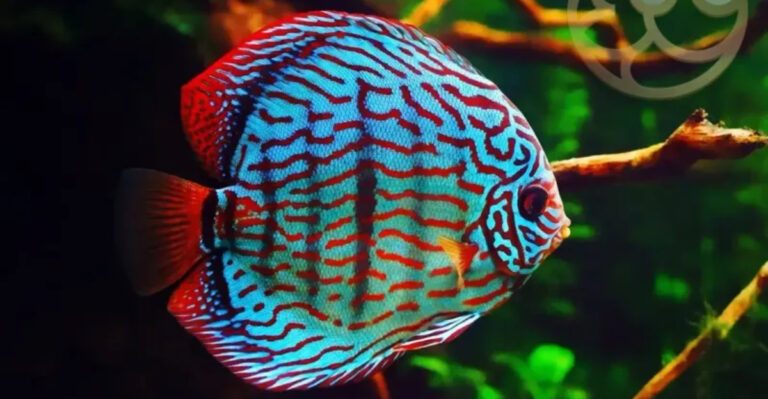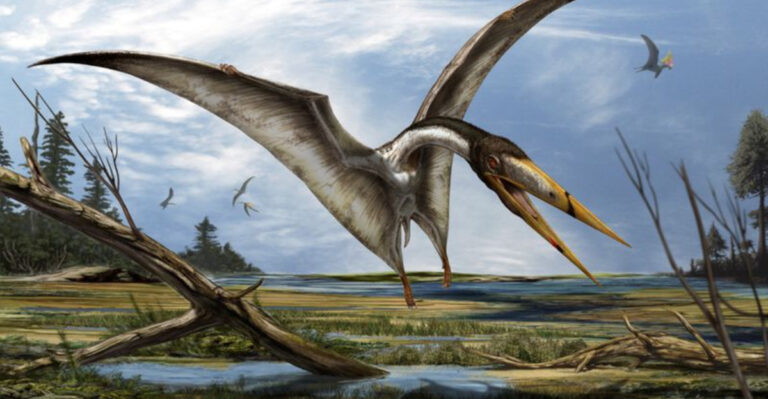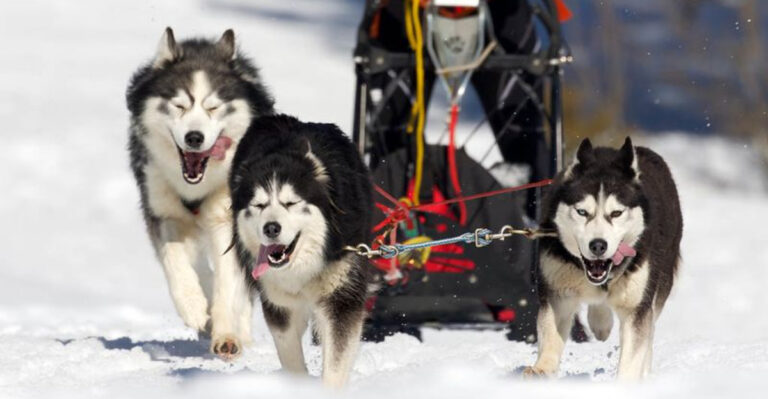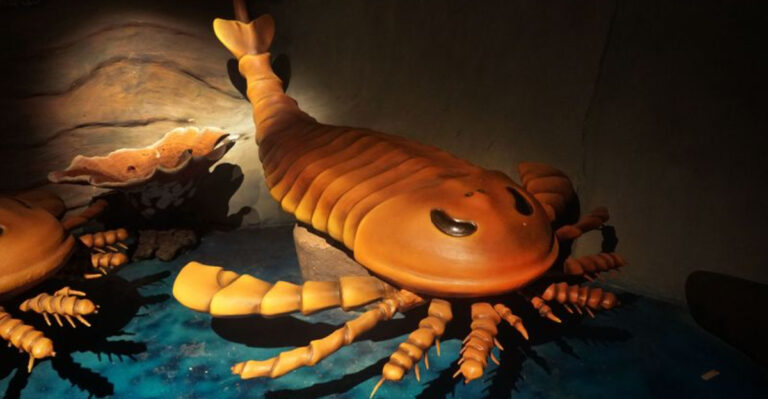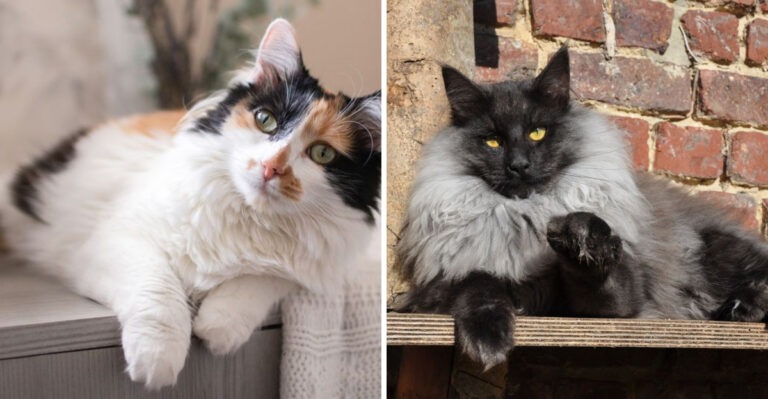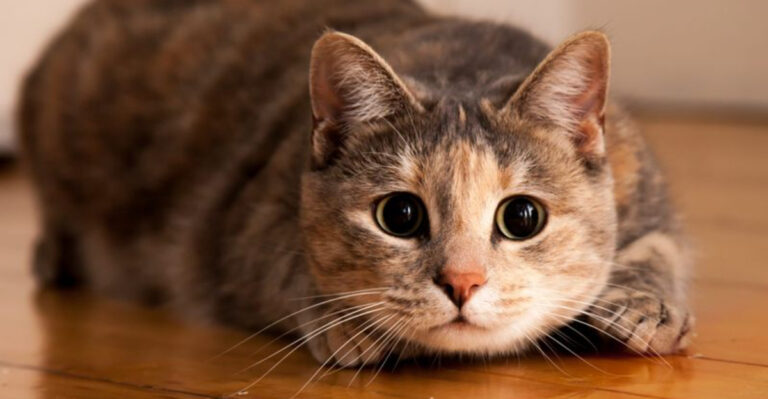Waddle Into World Penguin Day With These 12 Penguin Parenting Habits
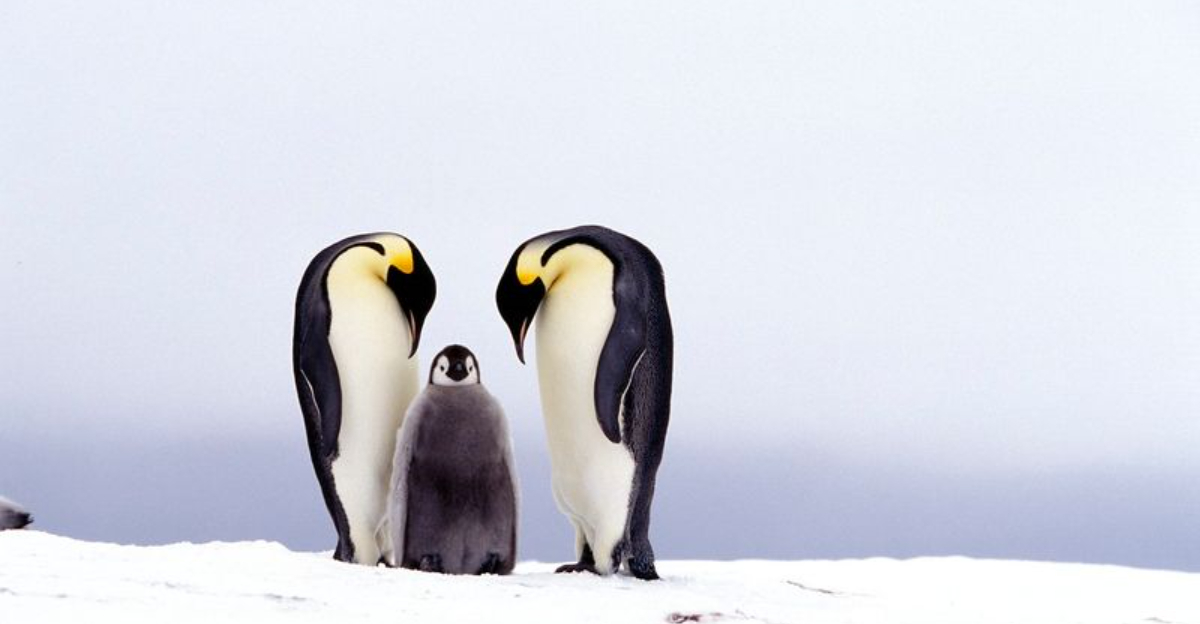
Have you ever wondered how penguins manage to raise their chicks in some of the harshest environments on Earth? Well, you’re in for a treat!
As we anticipate World Penguin Day, let’s waddle into the fascinating world of penguin parenting habits.
You’ll discover how these adorable creatures nurture their little ones with love, care, and a touch of penguin ingenuity. From warming their eggs to teaching their chicks how to swim, penguin parents have got it all covered.
So, grab a cozy seat, and let’s explore these incredible habits that make penguins some of the best parents in the animal kingdom!
1. The Egg Warmers
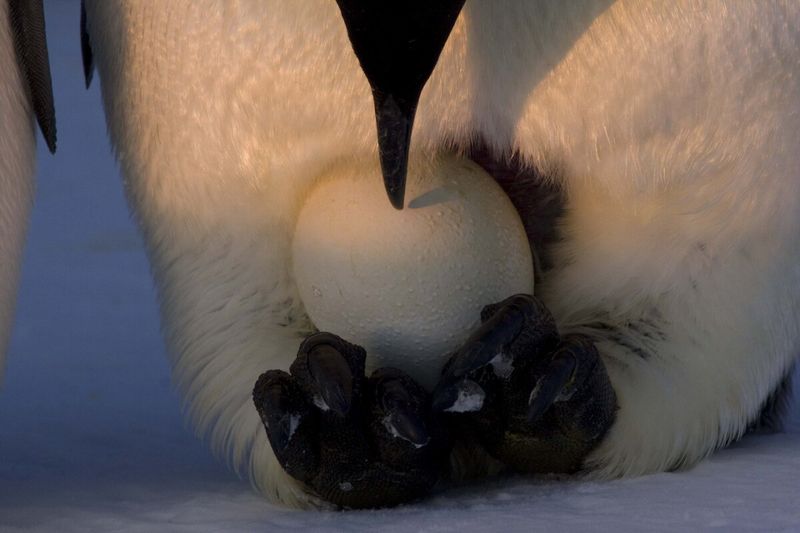
Ever seen a penguin balancing an egg on its feet like it’s the most precious treasure? That’s exactly what Emperor Penguins do.
They rely on their feet to keep eggs warm in the icy Antarctic chill. The parents take turns—one heads off to the sea to feed, while the other stands guard, protecting the egg from freezing temperatures.
The bond between them is heartwarming. As they switch roles, it’s a delicate dance of trust and teamwork. This cooperative parenting style ensures that the egg remains at a constant, nurturing temperature until it hatches.
2. Feeding Frenzy
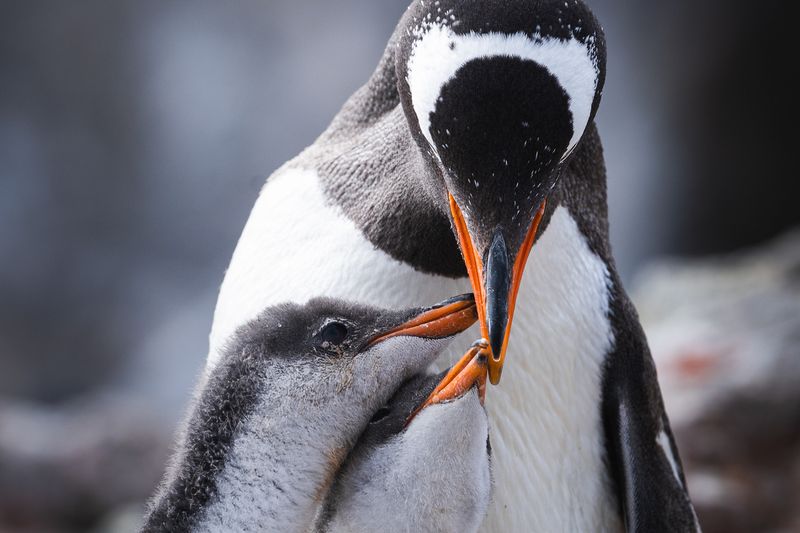
Gentoo Penguins have a unique way of ensuring their chicks are well-fed. When it’s mealtime, these penguins regurgitate food stored in their stomachs to feed their young.
It might not sound appetizing, but to a penguin chick, it’s a delightful feast. This regurgitation process is vital, allowing the chick to receive pre-digested food that’s easier to consume.
The sight of a mother gently feeding her chick is a touching example of the care and dedication penguin parents show.
3. Swimming Lessons
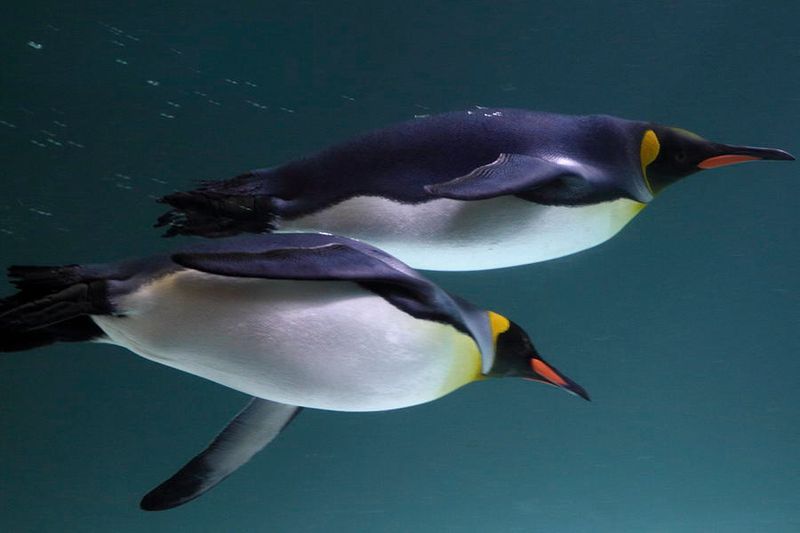
King Penguins are like the swim instructors of the penguin world. Once their chicks have grown enough, it’s time for swimming lessons. Chicks, fluffy and curious, gather at the water’s edge, hesitant yet excited.
An adult penguin leads by example, diving gracefully into the water. The young ones follow, initially clumsy but quickly learning the art of swimming.
These lessons are crucial for survival, teaching them how to hunt and evade predators. Watching them splash and paddle is both entertaining and poignant—a rite of passage in their journey to adulthood.
4. The Crèche System
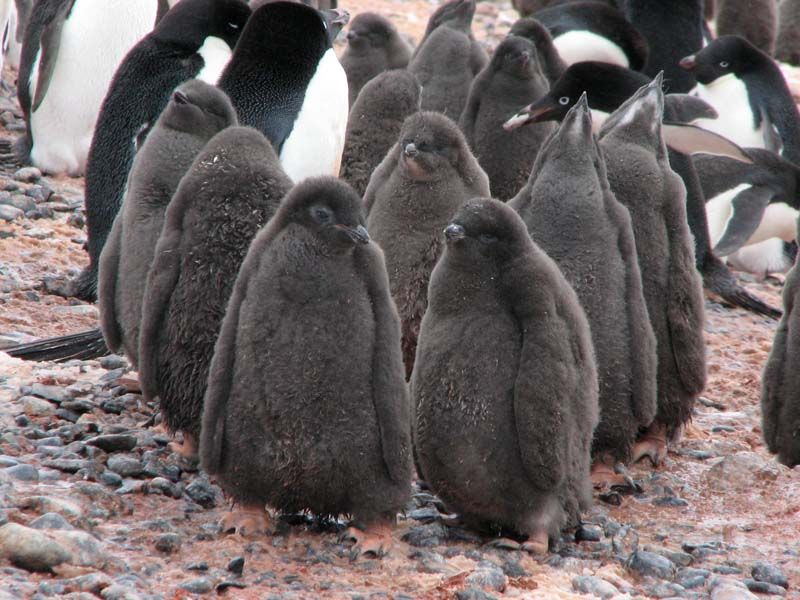
In the penguin world, it takes a village to raise a chick—or at least a crèche. Adelie Penguins utilize a communal care system, where chicks gather in large groups known as crèches while their parents hunt for food.
This social structure provides warmth and protection. It’s a survival strategy that reduces the risk of predation and helps chicks stay warm.
The adults take turns watching over the group, creating a safe environment for the young ones to play and grow. It’s a collective parenting effort that showcases the power of community.
5. March Of The Dads
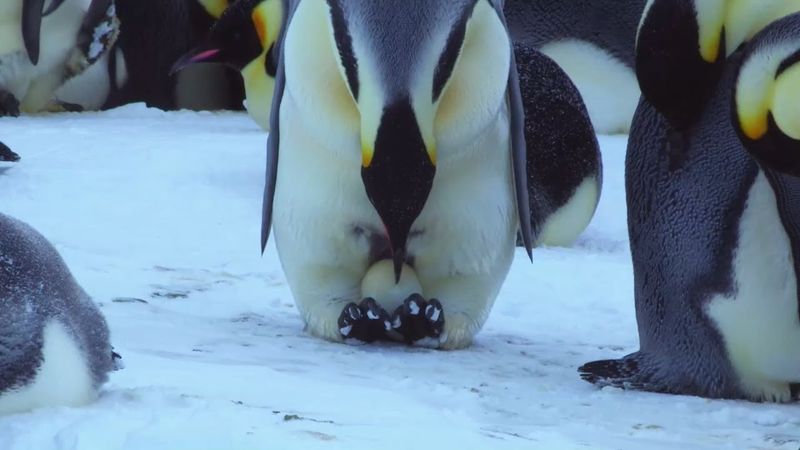
In a remarkable display of paternal care, male Emperor Penguins take the lead in incubating their eggs.
While the females embark on long hunting trips, the males huddle together, braving icy winds and temperatures as low as -40°F.
They form a circle, rotating positions to share warmth, each balancing their precious egg on their feet. This endurance test lasts for about two months until the females return.
The fathers’ dedication is admirable, turning the frozen landscape into a nursery of patience and resilience.
6. Vocal Recognition
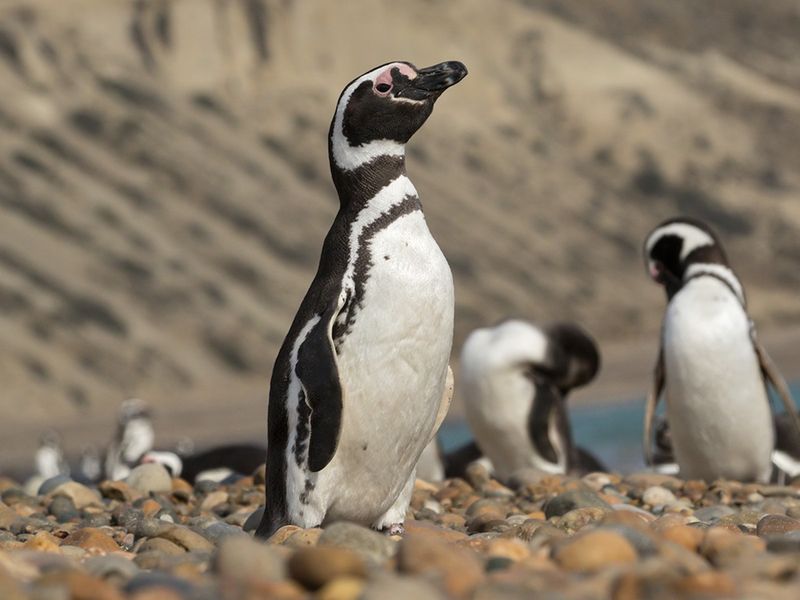
In bustling penguin colonies, vocal recognition is key for family reunions. Magellanic Penguins have a knack for identifying their chick’s call among thousands of others.
They use unique vocalizations to locate each other, strengthening the bond between parent and chick. This auditory connection ensures that even in the chaos of a crowded rookery, families find their way back to each other.
Their ability to communicate through sound is a testament to their incredible parenting skills.
7. Nest Builders
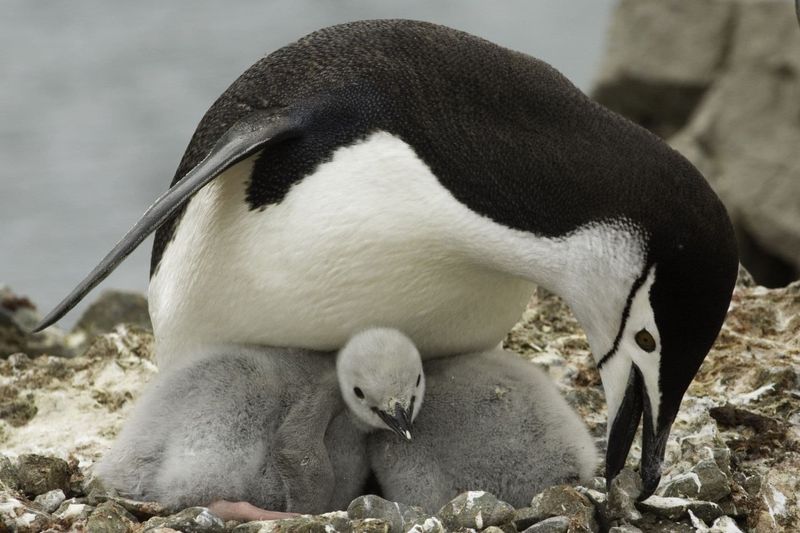
Chinstrap Penguins are the architects of the penguin world. They meticulously gather stones and twigs to build sturdy nests on rocky outcrops.
This construction work is not just about aesthetics; it’s crucial for protecting their eggs from the elements.
The nests elevate the eggs, preventing them from getting wet and cold. It’s a labor of love, with both parents participating in the building process.
Their teamwork is impressive, transforming simple materials into safe havens for their future chicks. The result is a cozy nest that stands strong against the harsh conditions.
8. Role Reversal
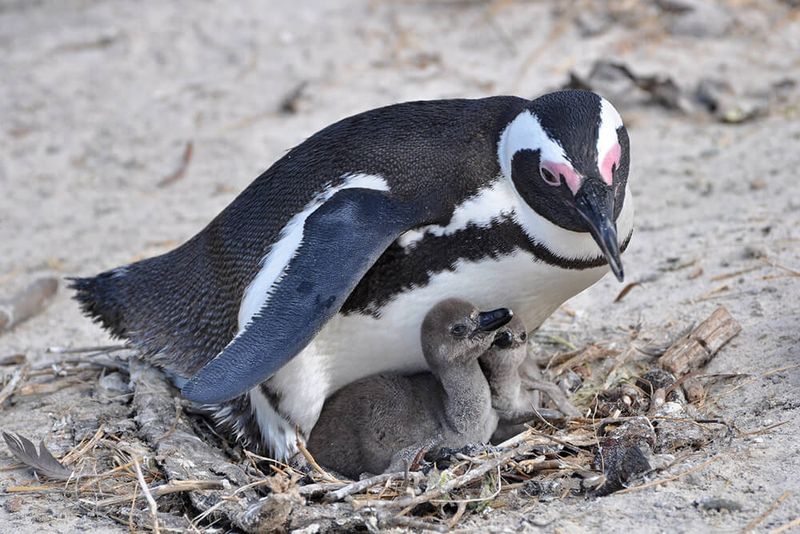
African Penguins practice role reversal in parenting, sharing responsibilities equally. While one parent goes off to fish, the other stays back, protecting the nest and the precious eggs within.
This partnership ensures that their chicks receive constant care and attention.
Upon returning, the parents switch roles seamlessly, with the foraging penguin taking over nest duties. This efficient system allows both parents to rest and feed.
9. Sibling Rivalry
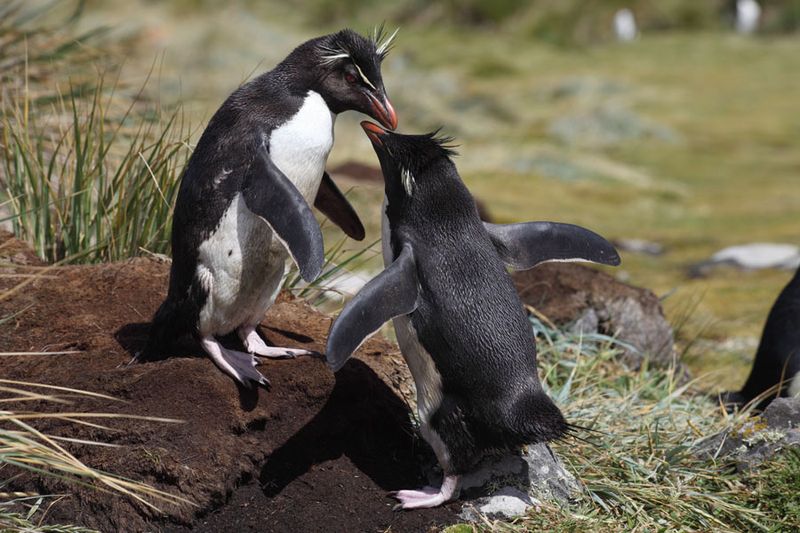
In the world of Rockhopper Penguins, sibling rivalry is a natural part of growing up. Chicks often compete for food and attention from their parents, leading to playful squabbles.
These interactions, though competitive, are crucial for developing survival skills. The stronger chick often gets more food, as parents focus resources on the one with better chances of survival.
While it may seem harsh, this method ensures that at least one chick thrives. It’s a lesson in resilience and competition, essential in the challenging environment they call home.
10. The Guardians
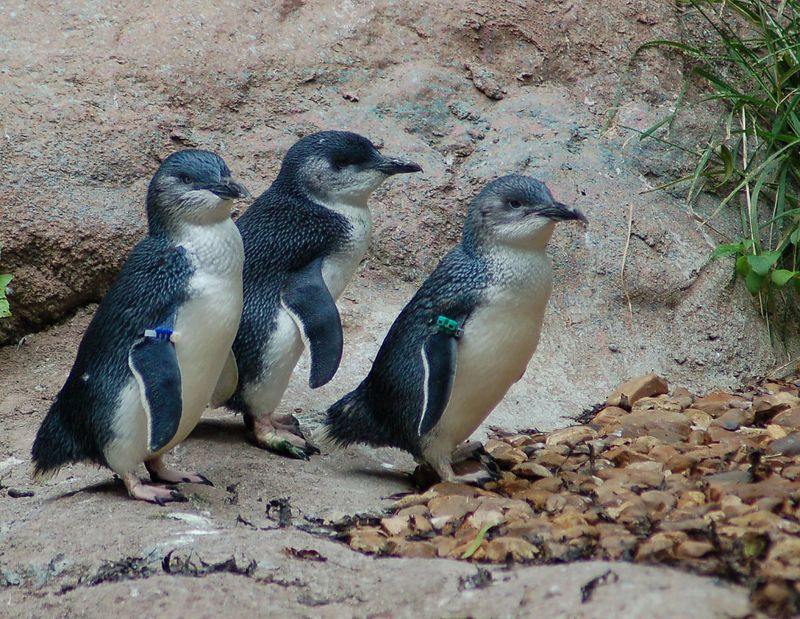
Little Blue Penguins, the smallest of their kind, are devoted guardians. They use burrows as homes, providing a safe haven from predators and harsh weather. Their protective instincts are strong, always vigilant.
Both parents share the duty of watching over the burrow, taking turns foraging and guarding. Their coordination ensures chicks are never left alone, offering constant protection and care.
These pint-sized penguins prove that size doesn’t matter when it comes to being great parents, showcasing dedication and teamwork in their nurturing roles.
11. The Great Journey
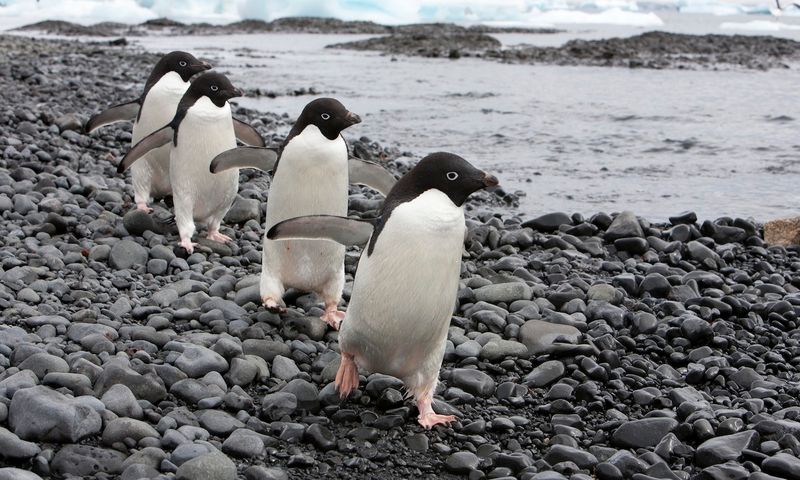
Adélie Penguins embark on a grand journey with their chicks, teaching them the essential routes to the sea. This migration is crucial, as it acquaints the young with their surroundings and hunting grounds.
The trek is arduous, but essential for survival, as it prepares the chicks for independent life. Along the way, they learn to navigate icy terrains and identify potential dangers.
The journey strengthens their endurance and resilience, equipping them with the skills needed for adulthood. It’s a family affair, filled with lessons and bonding moments.
12. The Skillful Divers
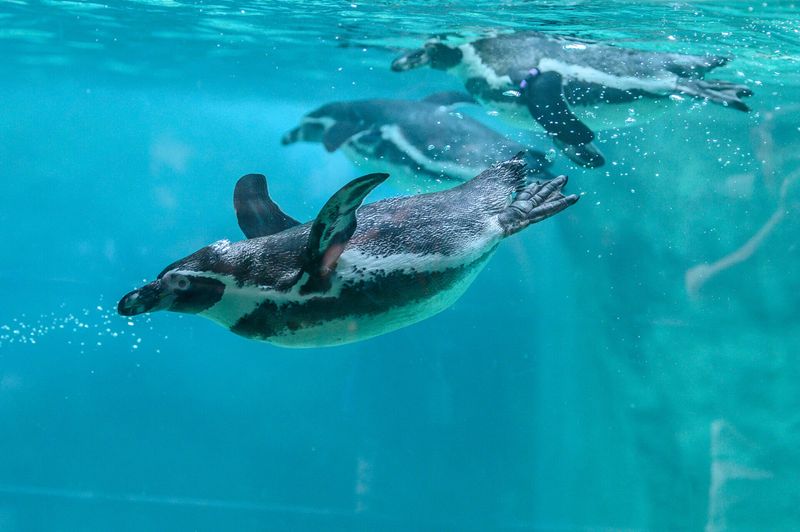
Humboldt Penguins are adept divers, and they pass on these skills to their chicks. Diving isn’t just a skill; it’s a vital survival tool. Parents demonstrate the techniques, diving with precision and grace.
As the chicks watch, they absorb these lessons, eager to mimic their parents. It’s a mesmerizing scene, as the chicks eventually take the plunge, learning to catch fish and navigate underwater.
These skills are critical for their future, ensuring they can provide for themselves. It’s a beautiful cycle of teaching and learning, connecting generations.

